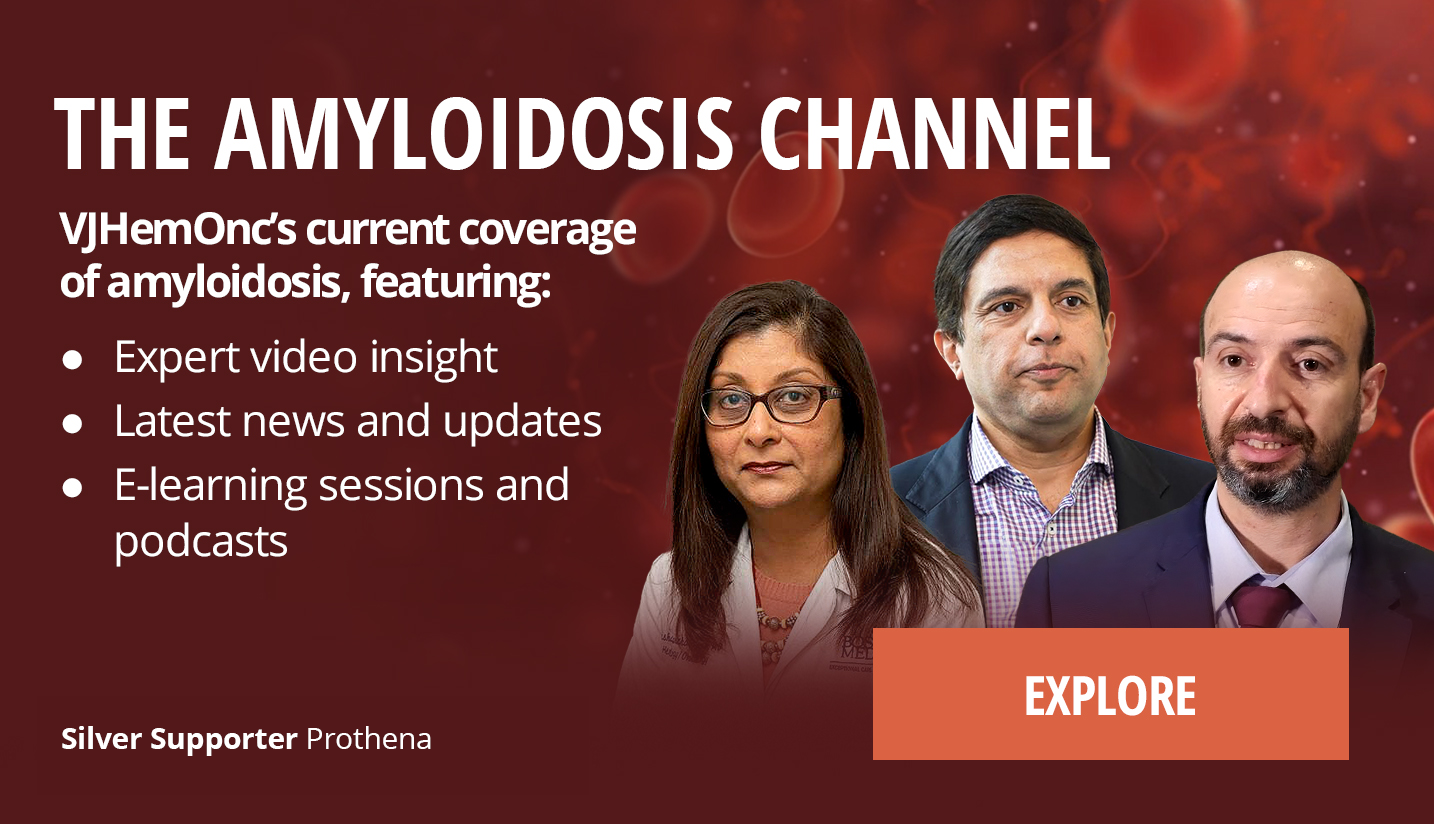Systemic AL amyloidosis has changed over recent years with different treatments. We know that prognosis previously was based on standard cardiac biomarkers, the NT-proBNP and the troponin. And there’s been the May 2012 staging system which has also looked at the dFLC, which is the difference between the involved and uninvolved free light chains. However, recent decades have shown improvements in outcomes and actually these traditional staging systems no longer predict those with the poorest outcomes so those with 3b disease previously these had a median survival of less than a year but when we’ve looked at data with the daratumumab-based treatments median overall survival is more than 12 months...
Systemic AL amyloidosis has changed over recent years with different treatments. We know that prognosis previously was based on standard cardiac biomarkers, the NT-proBNP and the troponin. And there’s been the May 2012 staging system which has also looked at the dFLC, which is the difference between the involved and uninvolved free light chains. However, recent decades have shown improvements in outcomes and actually these traditional staging systems no longer predict those with the poorest outcomes so those with 3b disease previously these had a median survival of less than a year but when we’ve looked at data with the daratumumab-based treatments median overall survival is more than 12 months. So we have proposed a Mayo stage 3C which identifies those with the highest risk and that’s based on the traditional cardiac biomarkers NT-proBNP and troponin but also looks at an echocardiographic endpoint called GLS which is the global longitudinal strain and those with a GLS of greater than minus nine percent alongside the traditional 3B biomarkers had the poorest outcomes. So the aim of the study was to look at patients in a European collaboration, so those from the UK as well as from Athens and from the Netherlands, to see if this 3C model was predictive of outcome internationally in this dataset. And we looked at 325 patients across these three countries and found that if you looked at traditional 3B data, median overall survival was 26 months, so that’s much better than has previously been reported in the bortezomib era. And if you apply 3C, these patients have a median overall survival of only nine months. So what’s really interesting is that the 3C model appears to predict those with the poorest outcomes. There have been improvements in outcomes in the daratumumab era. And we know, you know, in the future, this will hopefully continue to improve as well. And there’s a number of, I think, important implications for clinical trial study design, prognostication and counselling patients when you first see them, and potentially something that, if you can externally validate in many countries, can be a standard prognostic model.
This transcript is AI-generated. While we strive for accuracy, please verify this copy with the video.














